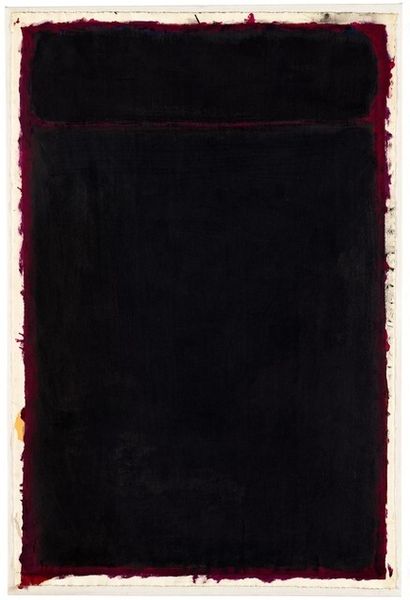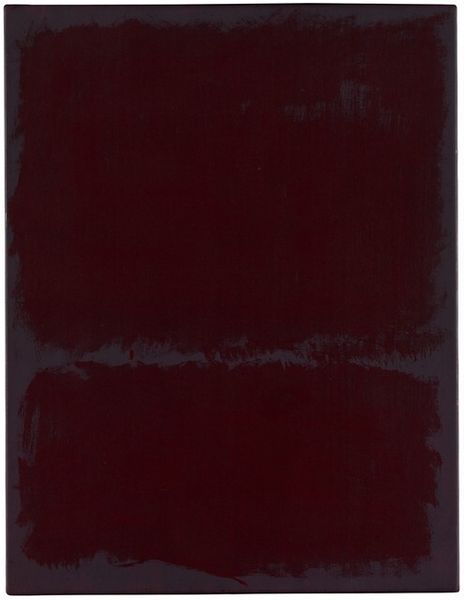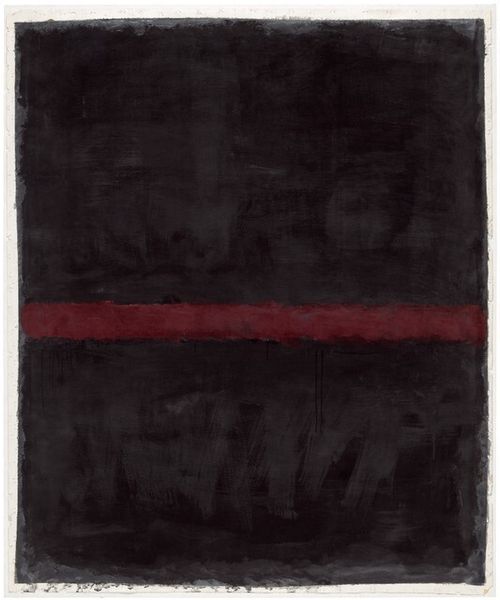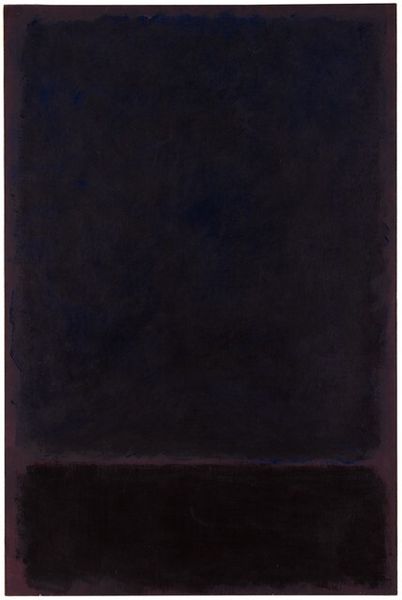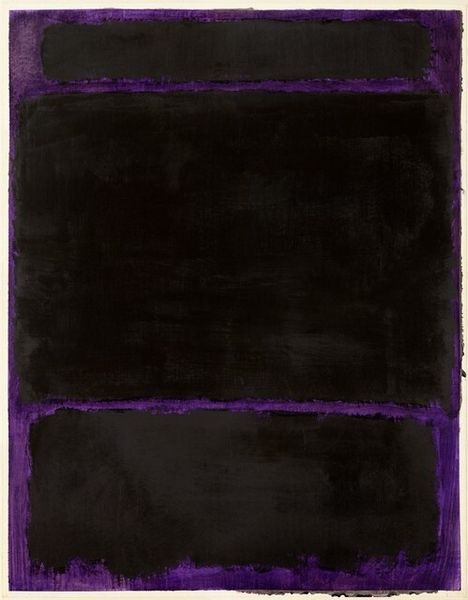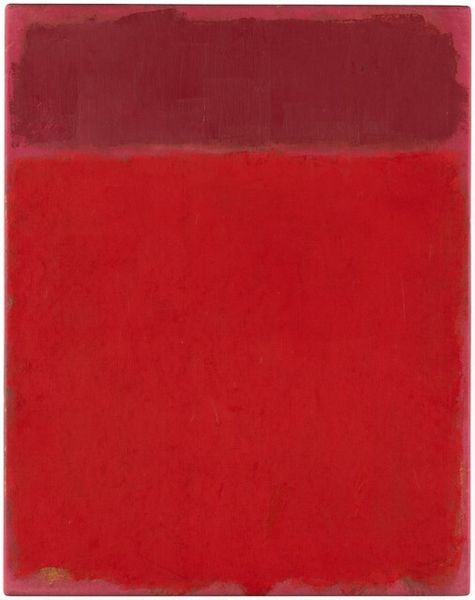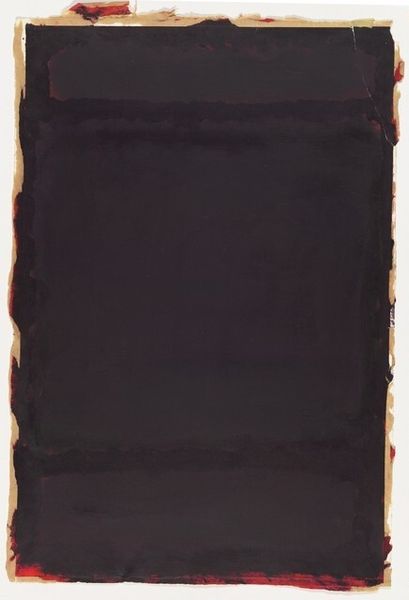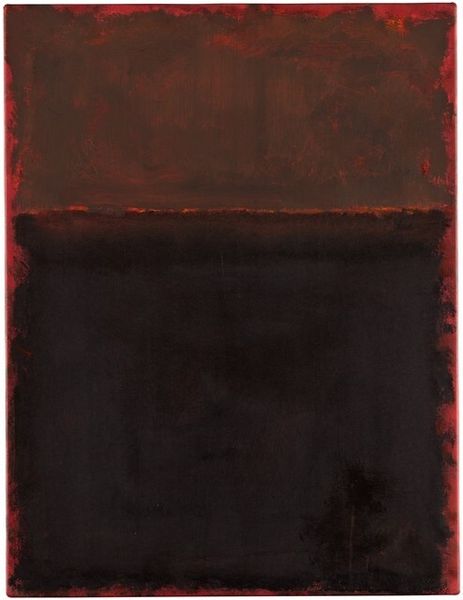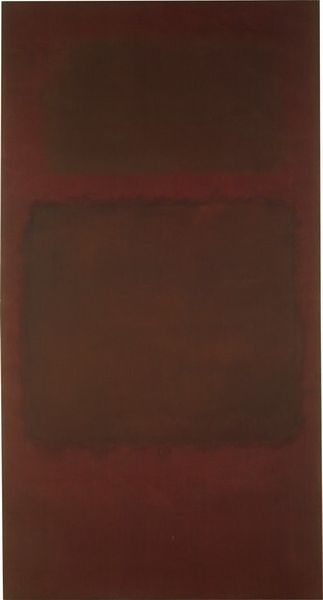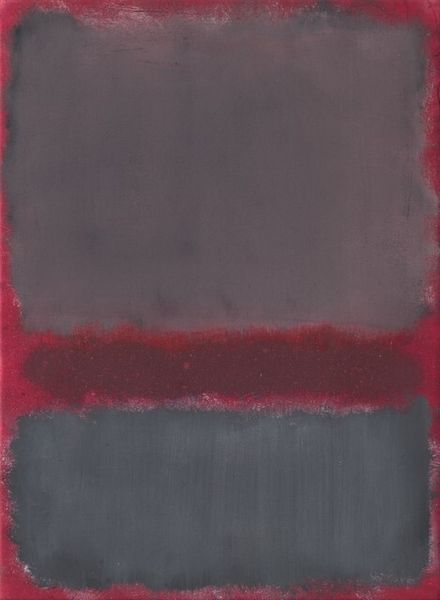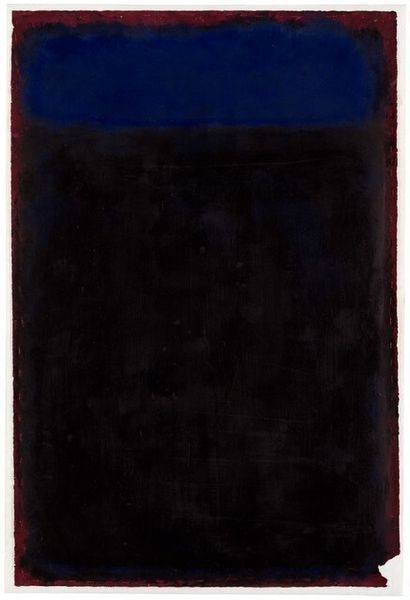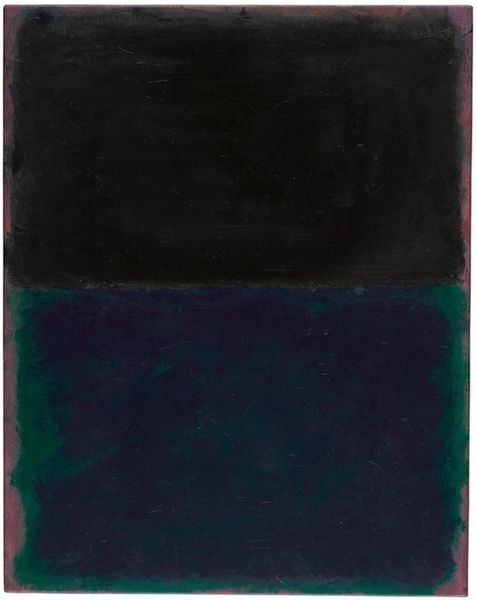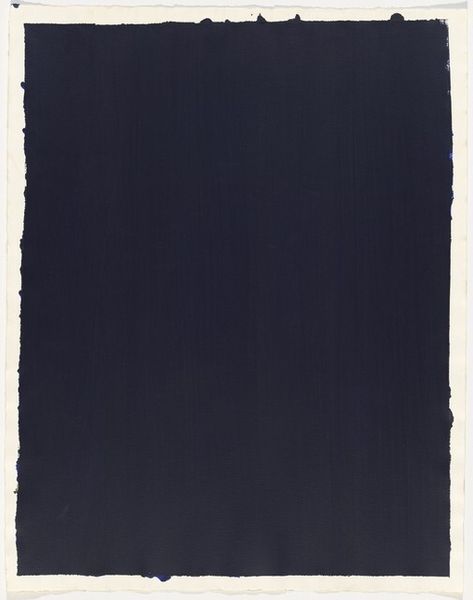
painting, oil-paint
#
abstract-expressionism
#
non-objective-art
#
painting
#
oil-paint
#
abstract-art
#
abstraction
#
abstract art
#
modernism
Copyright: National Gallery of Art: CC0 1.0
Curator: Here we have Mark Rothko's "Untitled" from 1968, an oil on canvas. Its imposing size really dominates this space. What strikes you about it? Editor: Starkness. The somber blocks of color evoke a kind of solemn monumentality. The contrast between the dark forms and the hazy burgundy creates a vibrating effect. How does it resonate historically? Curator: Rothko created this during a period marked by personal turmoil and a shift in the art world, moving away from Abstract Expressionism. These late works, with their muted tones, can be seen as a reflection of this emotional landscape. Many believe that they embody Rothko's increasing interest in exploring the darker aspects of human existence. Editor: Interesting, because the very materiality—the layering and bleeding of colors—speaks to a fragility. There's a tangible tension between the flatness of the canvas and the depth suggested by the hues, like a veil pulled taut. Curator: Absolutely, and this can be tied to Rothko's famous Seagram Murals. Initially meant for a commercial setting, the narrative took a dramatic turn. When Rothko withdrew from the project, some see these paintings as conveying the struggles of an artist within a capitalist society. It changed how he, and other artists, approached commissions going forward. Editor: Right. The choice of color—or rather, its strategic distribution—can also be seen as its own form of language. Those blurred edges aren't accidental. Curator: Rothko consistently denied attaching any narrative to his work. But, despite these disclaimers, some art historians suggest a certain performative aspect to this denial itself, embedding meaning in its rejection. Editor: I’d say it has to do more with surface and color relationship to the sublime than cultural impact; for me, it's a visual representation of existential emotion. I guess we find what we are looking for. Curator: Precisely. A dialogue, indeed! What a powerful thing to carry with us from such an immersive experience. Editor: Agreed. It certainly prompts us to engage with the language of painting.
Comments
No comments
Be the first to comment and join the conversation on the ultimate creative platform.
